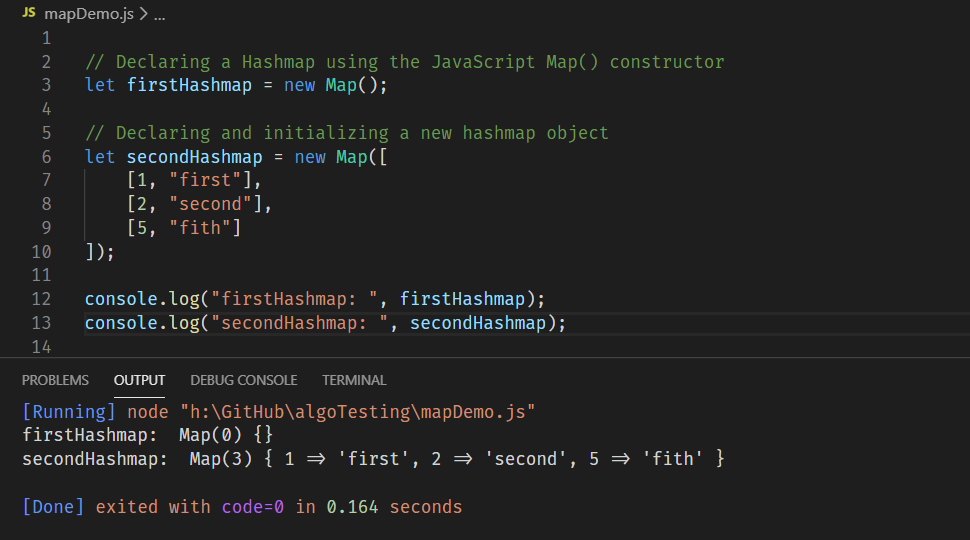Initializing a Google Map with JavaScript is a straightforward process that allows you to integrate interactive maps into your web applications. This guide walks you through the steps to set up a basic map, configure its properties, and add markers to enhance user interaction.

Step 1: Obtain a Google Maps API Key
Before you can use the Google Maps JavaScript API, you need an API key. Follow these steps to get one:
- Sign In to Google Cloud Console
- Go to the Google Cloud Console and sign in with your Google account.
- Create a New Project
- Click on the project drop-down menu at the top of the page.
- Select New Project, enter a name, and click Create.
- Enable Google Maps JavaScript API
- Navigate to APIs & Services > Library.
- Search for Maps JavaScript API and click Enable.
- Generate an API Key
- Go to APIs & Services > Credentials.
- Click Create Credentials and select API Key.
- Copy the generated API key for use in your application.
Step 2: Set Up Your HTML Page
- Create an HTML File
- Open your text editor and create a new HTML file, such as
index.html.
- Open your text editor and create a new HTML file, such as
- Add Basic HTML Structure
- Include the following basic structure in your HTML file:
html
<!DOCTYPE html>
<html lang="en">
<head>
<meta charset="UTF-8">
<meta name="viewport" content="width=device-width, initial-scale=1.0">
<title>Google Maps Initialization</title>
<style>
#map {
height: 100vh; /* Full height of the viewport */
width: 100%; /* Full width */
}
</style>
</head>
<body>
<div id="map"></div>
<script>
// Function to initialize the map
function initMap() {
// Define the location to center the map
var location = { lat: -34.397, lng: 150.644 };// Create a new map object
var map = new google.maps.Map(document.getElementById('map'), {
zoom: 8, // Zoom level
center: location // Center location
});// Add a marker to the map
</script>
var marker = new google.maps.Marker({
position: location,
map: map,
title: 'Hello World!'
});
}
<!-- Load the Google Maps JavaScript API -->
<script src="https://maps.googleapis.com/maps/api/js?key=YOUR_API_KEY&callback=initMap" async defer></script>
</body>
</html>
- Replace
YOUR_API_KEYwith the API key you obtained earlier.
- Include the following basic structure in your HTML file:
Step 3: Understanding the Code
- HTML Structure
- The
<style>tag ensures that the map element takes up the full viewport height and width. - The
<div id="map"></div>is the container where the map will be displayed.
- The
- JavaScript for Google Maps
- The
initMapfunction initializes the Google Map. It creates aMapobject, sets the center location, and defines the zoom level. - The
Markerobject adds a marker to the map at the specified location with a title.
- The
- Loading the Google Maps API
- The
<script>tag includes the Google Maps JavaScript API and calls theinitMapfunction once the API has loaded. Theasyncanddeferattributes ensure that the script is loaded asynchronously and executed after the page has finished loading.
- The
Step 4: Test Your Map
- Save and Open Your HTML File
- Save your changes and open the
index.htmlfile in a web browser.
- Save your changes and open the
- Verify Map Initialization
- Ensure that the map appears correctly, centered at the specified location, with a zoom level of 8. Check that the marker is displayed at the center of the map.
Step 5: Customizing Your Map
- Adjust Map Options
- Modify the
zoomlevel andcenterlocation in theinitMapfunction to customize the map’s appearance and focus.
- Modify the
- Add Additional Markers and Layers
- You can add more markers, layers, and controls to enhance your map. Refer to the Google Maps JavaScript API documentation for advanced features and customization options.
Conclusion
Initializing a Google Map with JavaScript is a simple yet powerful way to integrate interactive maps into your web applications. By following the steps outlined in this guide, you can set up a basic map, configure its properties, and add markers to provide users with an engaging and functional mapping experience. Experiment with different options and features to further customize your map and meet your specific needs.











